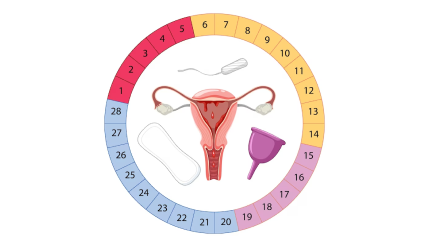You may also like…
Getting Pregnant : Healthy Fallopian Tubes
What are the Fallopian Tubes and why do you need the fallopian tubes to be open and healthy?
The fallopian tubes are like the ultimate road trip for eggs and swimming sperm, leading them to their potential baby-making destination: the uterus!
The fallopian tubes serve as the grand transport system, carrying the precious egg from the ovaries to the uterus. As the egg travels through this highway, it has a chance to encounter with the sperm. These little sperms are on a mission to find their perfect match and fertilize the egg, all while hoping for a successful pregnancy.
Now, let's talk about the importance of open fallopian tubes. For the magic of fertilization to happen, these tubes must remain unobstructed and free from any damage, such as scarring, adhesion, or blockage. It's like ensuring that traffic flows smoothly, allowing the egg and sperm to meet and create an embryo (precursor of a baby).
So how do we check the status of these tubes? Well, doctors have their trusty tools to inspect the fertility superhighway. They might use a hysterosalpingogram (HSG) or a sonohysterolapingogram (SSG) to assess the patency of the tubes. And in some cases, they may even opt for a laparoscopy (minimally invasive surgical procedure that uses a small camera), although that's a less common choice.
But here's the twist: knowing if the tubes are open doesn't necessarily guarantee their full functionality. We're still waiting for the perfect test to check all the amazing physiological processes and functions performed by these tubes.
Now, let's explore the reasons behind tubal factor infertility. Sometimes, those mischievous tubes can encounter roadblocks, causing trouble for the egg and sperm's journey. Infections, like chlamydia and gonorrhea, are common culprits, creating scarring and adhesion that hinder the fertility superhighway. Even if these infections go unnoticed or untreated, they can still contribute to infertility.
But infections aren't the only troublemakers. Previous abdominal surgeries, diseases such as endometriosis, tuberculosis, or even a rogue ruptured appendix can disrupt the flow of this reproductive highway. It's like unexpected construction work causing detours and delays.
So there you have it, the exciting world of open fallopian tubes and tubal factor infertility. It's a complex journey filled with twists and turns, but we're hopeful that advances in medicine will soon provide us with the perfect test to check not only the road's openness but also its full functionality.
Until then, let's appreciate the marvel of this fertility superhighway and keep the road clear for the incredible adventure of creating life. Drive safely, and may your journey be filled with joy, love, and little bundles of happiness!
Buckle up, my curious friend, because we're about to take a wild ride through some fascinating tests that explore the mysteries of the female reproductive system!
First up, we have the Hysterosalpingogram (HSG). Imagine it as a special X-ray adventure, where we delve into uterus and fallopian tubes. A clever dye is injected through the cervix, and with the help of X-rays, it unveils any sneaky obstructions or abnormalities lurking in there - think blockages, scar tissue, or funky shapes and sizes.
But hold on, we're not done yet! Prepare for the next test on our exciting journey: the Sonohysterosalpingogram (SHG). This time, we're switching gears to ultrasound exploration. Instead of X-rays, we use sound waves to investigate the uterus and fallopian tubes. Just a tiny amount of saline is injected into the uterus, giving us a fantastic contrast to spot any mischievous abnormalities.
And now, drumroll please, we arrive at our final destination: Laparoscopy! This is where things get really interesting. It's a cool, minimally invasive surgical procedure that lets a skilled surgeon play detective in your abdominal and pelvic regions. They make a few tiny incisions and introduce a magical tool called a laparoscope—imagine a slim, flexible tube armed with a camera and a tiny light. It's like having a secret agent exploring the mysterious depths of your reproductive system.
Why would they do this, you ask? Well, laparoscopy is the go-to method for uncovering the truth behind conditions like endometriosis, ovarian cysts, fibroids, and adhesions. It's like having an inside scoop on all the nitty-gritty details of your fertility. Plus, it's not just for snooping around—it can also be used for treatment, fixing any issues they may encounter along the way.
So there you have it, my adventurous friend! We've journeyed through X-rays, sound waves, and even a bit of surgical magic to explore the wonders of the female reproductive system. Remember, these tests are like thrilling adventures, shedding light on any hidden secrets and paving the way for a clearer path to fertility.







